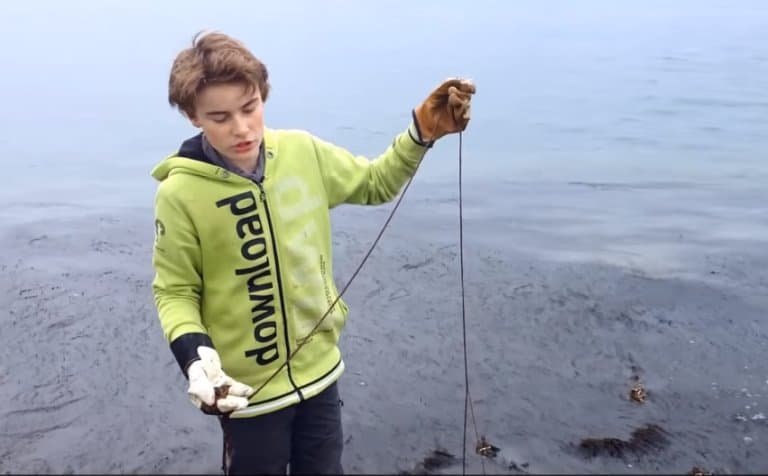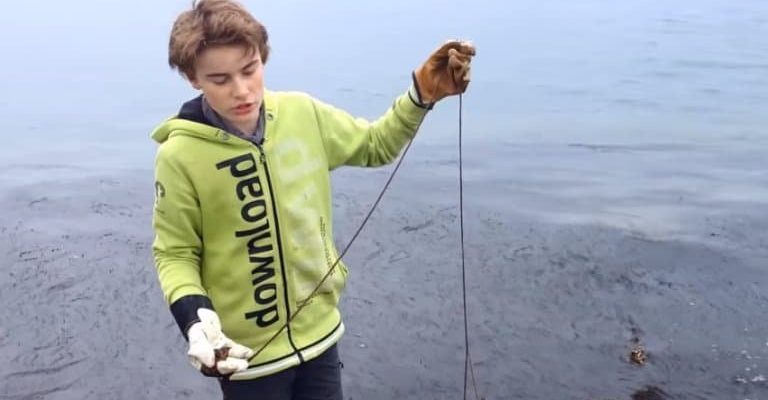
You might be wondering how a little worm can cope with powerful waves and turbulent waters. Think of it this way: when a huge storm rolls in, it’s like tossing a giant rock into a still pond. The ripples and waves affect everything, including our wriggly friend. Understanding bootlace worm behavior during these intense times not only highlights their resilience but also gives us insight into how marine ecosystems adapt to changing conditions. So, let’s dive deeper into the world of bootlace worms and see what happens when nature gets a little wild.
What Are Bootlace Worms?
Bootlace worms, scientifically known as *Lineus longissimus*, are among the longest animals on Earth. They can stretch up to 55 meters (about 180 feet) in length! These worms are mainly found in the shallow coastal waters of Europe and are often spotted hiding among seaweeds or buried in the sand. They have a slimy, segmented body that can be a challenge to identify, especially since they tend to blend seamlessly with their environment.
What makes bootlace worms particularly interesting is their ability to regenerate. If they lose a part of their body—whether due to a predator or perhaps an encounter with a strong wave—they can grow it back. This incredible adaptation comes in handy during storm surges, where the force of the water can dislodge them from their homes or even harm them. Their resilient nature is like a superhero power that ensures their survival in unpredictable conditions.
Understanding Storm Surges
Storm surges occur when strong winds from a storm push ocean water toward the shore, causing higher sea levels. Imagine a kid pushing down on a beach ball—it’s going to make waves splash everywhere! This phenomenon can lead to flooding and erosion, affecting both coastal areas and the creatures living there, like our bootlace worms.
During a storm surge, water can rise dramatically, altering the worm’s habitat. The surge can bring in debris, new nutrients, and even other marine life, which can change the overall ecosystem. Bootlace worms have a remarkable ability to adapt to these shifts, navigating through the sudden changes in their environment. They often burrow deeper into the surf zone to escape the harsher conditions above, finding safety in familiar surroundings while the chaos unfolds above them.
Bootlace Worm Behavior During Storm Surges
So, how do bootlace worms respond specifically during these stormy times? They exhibit a range of fascinating behaviors. First, their burrowing instinct kicks in. When a storm surge hits, they tend to dig deeper into the sand or mud. This action helps them avoid the most violent turbulence, much like how a rabbit might burrow down when it senses danger.
Additionally, bootlace worms become more active during surges. It’s almost as if they’re on a mission to explore new areas. They might move around more to find food or escape less favorable conditions. The surge can stir up nutrients in the water, which means a buffet of food might be on the horizon. These worms can take advantage of the food on offer, ensuring they still get enough to eat even during turbulent times.
The Impact of Environment on Bootlace Worms
The impact of storm surges on bootlace worm behavior goes beyond just immediate reactions. Over time, these storms can reshape their habitats. Changes in sediment, water temperature, and salinity can alter how and where these worms thrive. For example, if a storm moves sand from one spot to another, bootlace worms may have to relocate or adapt to new conditions.
Their adaptability is crucial. If they can’t adjust to their new environment after a storm, they might struggle to survive. This adaptability showcases the resilience of bootlace worms in the face of environmental challenges. It’s nature’s way of ensuring that only the most versatile creatures continue to thrive, reminding us that life is full of surprises and challenges.
How Bootlace Worms Interact with Other Marine Life
During storm surges, bootlace worms don’t just fend for themselves. They interact with various marine organisms that are affected by the same environmental changes. For example, when the surge brings in debris, it can attract small fish and crustaceans, which in turn might become food for bootlace worms.
Interestingly, bootlace worms can also be preyed upon by larger marine animals during these chaotic times. Think about it: when food sources are disrupted, animals are more likely to venture closer to shore or into unfamiliar territory. This can lead to a shift in predator and prey dynamics, creating an ecosystem that’s constantly in flux.
In addition, bootlace worms can affect the habitats of other creatures. Their burrowing can help aerate the seabed, allowing other species to thrive. The interconnectedness of marine life is truly remarkable, especially when you think about how each creature plays a role in maintaining the balance of their environment.
The Role of Bootlace Worms in Ocean Ecosystems
Bootlace worms play a vital role in the health of ocean ecosystems. They contribute to nutrient cycling by breaking down organic matter and recycling nutrients back into the ecosystem. When storm surges mix things up, bootlace worms help maintain this balance, ensuring that nutrient levels remain stable even after a tumultuous event.
Moreover, their presence can indicate the health of marine environments. If bootlace worms are thriving, it’s often a sign that the ecosystem is in good shape. They can be sensitive to changes in water quality, making them valuable indicators for scientists studying coastal health.
As we think about climate change and increasing storm severity, the role of bootlace worms becomes even more critical. Understanding how they adapt to changing conditions helps us better gauge the health of our oceans and the resilience of marine life in the face of ongoing environmental changes.
The behavior of bootlace worms during storm surges is a testament to their resilience and adaptability. These fascinating creatures navigate through turbulent waters, burrowing deep into the sand and actively seeking out food. They remind us of the interconnectedness of marine life and the delicate balance of ocean ecosystems.
As we face more severe weather patterns due to climate change, studying how bootlace worms respond to storm surges can offer valuable insights into the future of marine environments. So, the next time you think about the ocean and its wonders, remember the bootlace worm and its incredible ability to adapt and thrive under pressure. Nature, after all, has a way of surprising us with its tenacity and ingenuity.

